2022 has been a big year for AMD. First, the company launched its Ryzen 6000 mobile APUs, which featured improved power efficiency and powerful RDNA 2 graphics. On the desktop, the Ryzen 7 5800X3D was the company’s first chip to use V-Cache, which put this eight-core CPU on par with its 12- and 16-core brothers in games. But these are inconsequential in comparison to Ryzen 7000, which could be the biggest generation-to-generation improvement since the original Ryzen 1000 series.
Here’s everything we know about Ryzen 7000 so far.
Pricing and availability
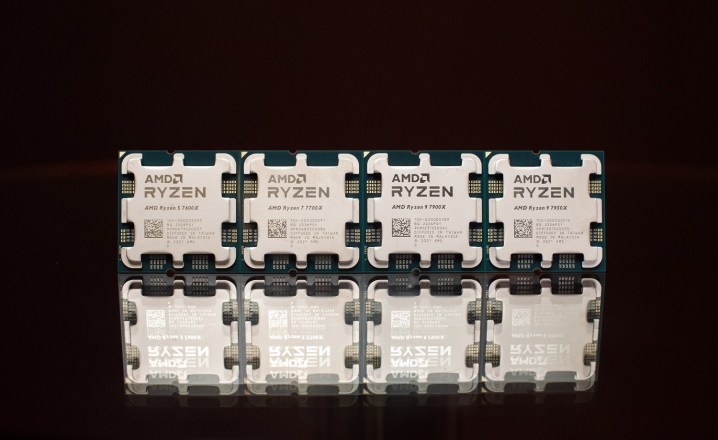
At the Ryzen 7000 announcement, AMD confirmed Ryzen 7000 CPUs would be available at retail starting on September 27, a bit later than some rumors had predicted, which means there could have been a short delay on account of rumored motherboard issues. It’s also probably not a coincidence that September 27 is also the day Intel is expected to announce its upcoming 13th Gen Raptor Lake CPUs; perhaps AMD decided a delay wasn’t just necessary, but also welcome.
We also have the prices for the first wave of Ryzen 7000:
- Ryzen 9 7950X: $699
- Ryzen 9 7900X: $549
- Ryzen 7 7700X: $399
- Ryzen 5 7600X: $299
Pricing has actually improved for the eight- and 16-core models. In fact, the 7950X is cheaper than the original 16-core flagship 3950X when it launched in 2019. The 7700X is also $50 cheaper than the 5800X, though it would have been nice to see the 7700X match the price of the $299 5700X. While many expected higher prices for most of these CPUs, we can be quite relieved that prices are either flat or lower than before.
Specs
In addition to prices, AMD revealed the specs of its upcoming Ryzen 7000 processors. We don’t have a full breakdown yet, but you can see in the table below that enthusiasts are headed for higher clock speeds and power demands, while AMD is staying with the same core count as its previous two generations.
| Ryzen 9 7950X | Ryzen 9 7900X | Ryzen 7 7700X | Ryzen 5 7600X | |
| Cores/Threads | 16/32 | 12/24 | 8/16 | 6/12 |
| Boost clock speed | 5.7GHz | 5.6GHz | 5.4GHz | 5.3GHz |
| Base clock speed | 4.5GHz | 4.7GHz | 4.5GHz | 4.7GHz |
| Cache (L2 + L3) | 80MB | 76MB | 40MB | 38MB |
| TDP | 170W | 170W | 105W | 105W |
| Price | $700 | $550 | $400 | $300 |
Architecture
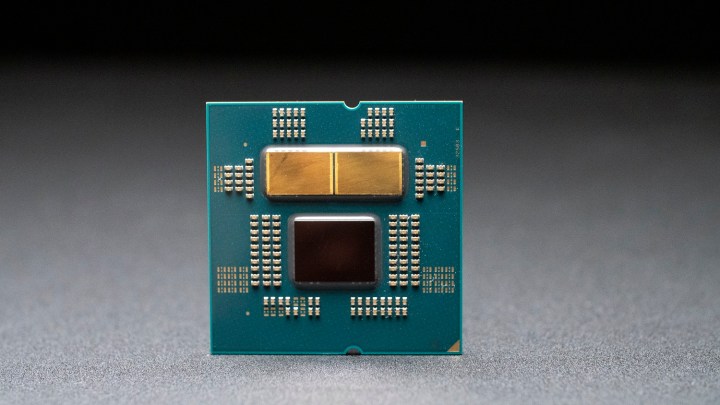
The Ryzen 7000 chips are based on the new Zen 4 architecture. This is a continuation of the Zen microarchitecture that AMD has been using since Ryzen 1000, but it continues the evolution of the chiplet design pioneered on Zen 2 and is built on TSMC’s new enhanced 5nm process node.
The 5nm node — known as N5 at chipmaker TSMC — is said to offer either a 15% boost in clock speed at the same power or a 30% reduction in power consumption at the same frequency, in addition to 1.8x greater transistor density over N7.
As for the design improvements of the architecture itself, AMD promised an 8% to 10% instruction per clock (or IPC) boost at its Financial Analyst Day in June, but AMD has since revised that figure to 13%. That’s a smaller improvement compared to last gen’s Zen 3, but we haven’t talked about clock speed.
AMD has targeted extremely high clock speeds with Ryzen 7000. AMD finally hit the 5GHz mark on its Zen CPUs with Ryzen 6000 mobile, and Ryzen 5000 capped out at 4.9 GHz. But Ryzen 7000 blows right past last-generation chips and features clock speeds as high as 5.7 GHz, albeit in single-threaded workloads. At the same time, Ryzen 7000 is 25% more efficient than Ryzen 5000, thanks to the 5nm node and decent IPC improvements offsetting the increase in frequency.
Cache is also a focus for Ryzen 7000, as each Zen 4 core is now equipped with 1MB of cache rather than the 512KB we saw on Zen 3. L3 cache was not increased within the CPU itself, but AMD did confirm V-Cache will come to Ryzen 7000, albeit only on certain CPUs. Counting both L2 and L3 cache, the flagship Ryzen 9 7950X has 80MB total, and a theoretical Ryzen 7 7700X3D with V-Cache could have up to 104MB.

Ryzen 7000 also features a TDP increase for its flagship parts, from 125 watts on Ryzen 3000 and 5000 to 170 watts. Prior 12- and 16-core models were constrained by the 125-watt limit, hence the increase. Another interesting change is the addition of integrated RDNA 2 graphics, but they aren’t very powerful. One might wonder why AMD would decide to add a weak iGPU to its desktop CPUs, but it’s likely because AMD wants to be able to sell this CPU in machines without discrete graphics and also in laptops such as Dragon Range.
Those graphics are stored not on the CPU chiplets, but on the I/O die, which is now on TSMC’s 6nm node, a more economic version of its 7nm node. Graphics aren’t the only new addition to the I/O die though, as AI acceleration features are built in as well.
Performance
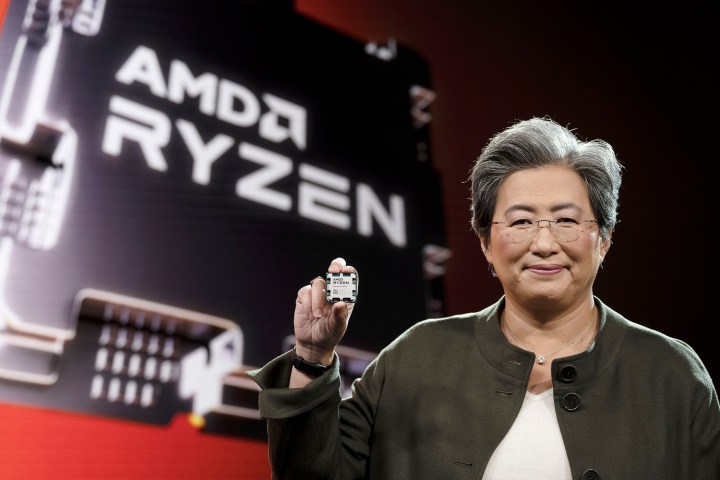
Higher IPC, higher clock speeds, and more cache are basically the perfect formula for great performance, and AMD is promising quite a bit with Ryzen 7000. Compared to Ryzen 5000, AMD is claiming a 29% increase in single-threaded performance and a massive 49% increase in multi-threaded performance despite the fact that Ryzen is still limited to the same 16 cores it’s had since 2019.
The comparison to Intel is even more interesting. Compared to the flagship Core i9-12900K, AMD is claiming 11% better performance in single-threaded tasks, 44% better multi-threaded performance, and 47% higher power efficiency. AMD also claims that the $300 7600X is a better gaming CPU than the 12900K, a claim we’ll definitely want to examine in detail.
Of course, Ryzen 7000’s main competition isn’t 12th Gen Alder Lake, but 13th Gen Raptor Lake. Conservative estimates based on AMD’s prior announcements made the fight look pretty even between the two CPUs, and it seemed like AMD could possibly squeeze out a slight win in multithread but lose the fight for single thread. But now it’s possible AMD might tie or even beat Raptor Lake in single thread too. A recent leak for the Core i9-13900K showed the chip achieving a score of 2290 in Cinebench R23’s single-threaded test. In the same benchmark, AMD claims the Ryzen 9 7950X achieves 2275 points.
If AMD’s numbers are to be believed, Ryzen 7000 definitely beats Alder Lake and might even be a little better than Raptor Lake too in productivity workloads. As for gaming performance, Raptor Lake’s better and bigger cache is rumored to deliver higher performance than Alder Lake, but that’s all we can really say with any confidence. None of this is 100% certain until reviews come out, so take don’t AMD’s marketing and rumors at face value.
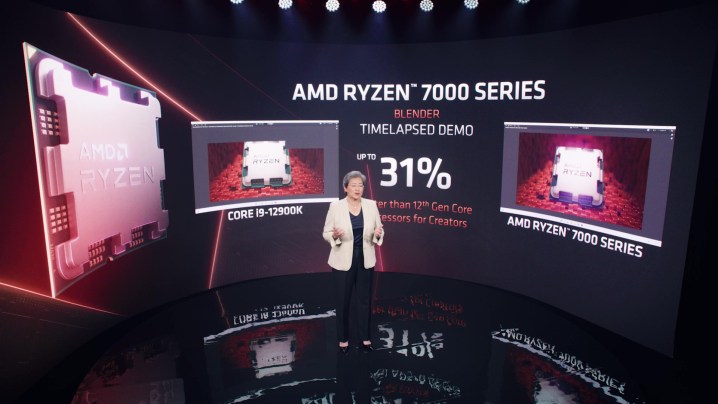
Another feature that should help boost performance is support for DDR5 memory. At launch, AMD says Ryzen 7000 will be able to utilize 6400MHz kits of DDR5. Furthermore, AMD is also introducing EXPO, a “one-click DDR5 overclocking” solution for Ryzen 7000. It’s probably just a tweaked version of XMP but we’ll see.
Ryzen 7000 processors exclusively support DDR5 memory, which is more expensive than DDR4. However, AMD seems confident that Ryzen 7000 could bring DDR5 prices down.
New chipset and a new socket
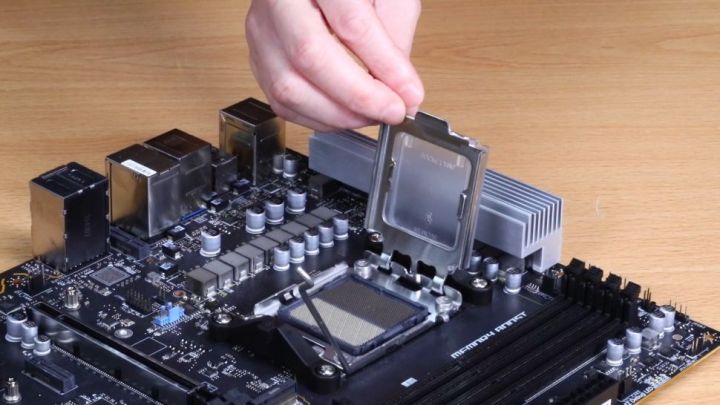
With the next generation of CPUs, AMD is retiring the AM4 socket that it has used since the launch of first-generation Ryzen chips. That shouldn’t come as a surprise, as the socket will be some five years old by the time next-gen Ryzen chips show up.
This new socket will use an LGA1718, Land Grid Array design, with the CPU pins on the motherboard instead of on the CPU. Intel has used LGA sockets for several generations, while AMD has stuck with the older Pin Grid Array (PGA) socket design for everything up to Ryzen 5000.
As the name suggests, LGA1718 will feature 1,718 pins on the motherboard. LGA designs can support a higher pin density, and that’s clear to see with AM4’s mere 1,331 pins. Those additional pins will help open up support for DDR5 memory, as well as PCI-Express 5.0, and improved overall performance.
Those new AM5 sockets will be part of a new generation of 600 series motherboards. The X670E extreme motherboards will offer the highest quality VRMs for enhanced overclocking, and will have PCI-E 5 support on every M.2 and PCIe slot; X670 boards will feature mainstream overclocking potential, PCIe 5.0 on both the first x16 PCIe 5.0 slot, and at least one M.2 slot, while B650 motherboards will have PCIe 5.0 for at least one M.2 slot, and will instead feature PCIe 4.0 for the actual slots.
These new motherboards will bring with them support for up to 24 PCIe 5.0 lanes, 14 USB ports running up to 20Gbps, Wi-Fi 6E, and Bluetooth 5.2. Better yet, thanks to the new integrated graphics, AMD 600 motherboards will be able to support up to four HDMI 2.1 or DisplayPort 2 ports.
Although AMD is moving to a new socket design, Ryzen 7000 chips will use the same socket size and will fully support AM4 coolers.
Integrated graphics and APUs
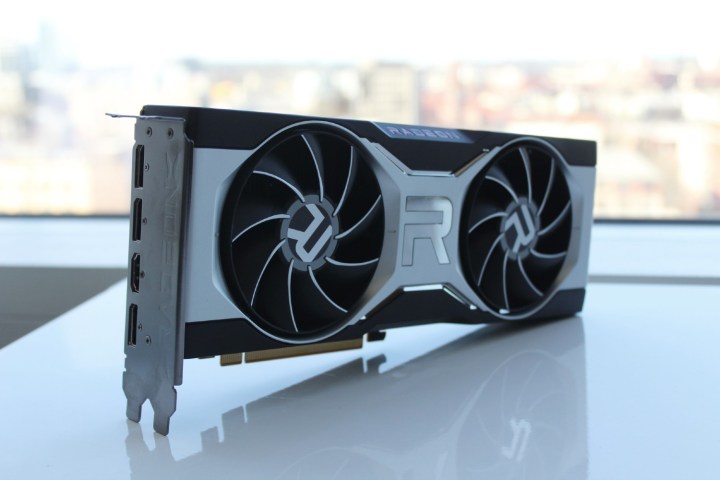
By including the GPU on the I/O die instead of the main CPU chiplets, AMD isn’t having to make any sacrifices to add integrated graphics, so all Ryzen 7000 chips will have an onboard RDNA 2 GPU. Ryzen 7000 won’t replace APUs, though. Instead, the included graphics are meant to aid in troubleshooting as well as to enable AMD to sell its desktop CPUs in other machines that normally like having integrated graphics, like laptops and desktops for business.
RDNA 2 is the same architecture AMD is currently using on its Radeon RX 6000 graphics cards, as well as the Xbox Series X and PlayStation 5, and the new Ryzen 6000 mobile CPUs, so that should give these chips excellent entry-level gaming capabilities, even when they aren’t paired with a dedicated graphics card.
This is not only great for anyone who doesn’t want to buy a new GPU, but it’s great for troubleshooting GPU issues. Speaking of which, there is also some new information regarding the upcoming Radeon RX 7000 GPUs where AMD has confirmed that it will be based on the 5nm manufacturing process and will deliver more than a 50% improvement in performance per watt over the previous generation.
Editors’ Recommendations




